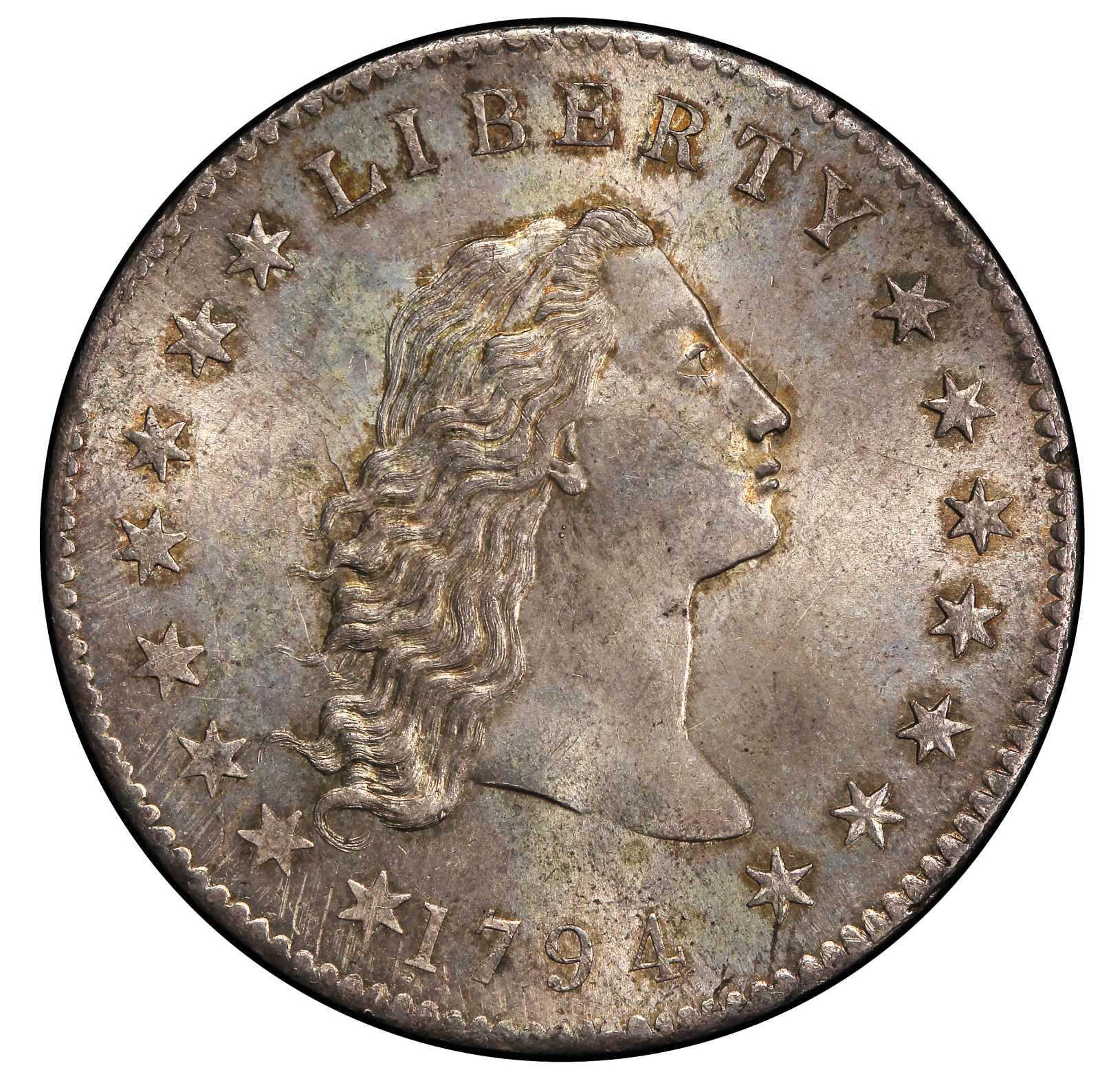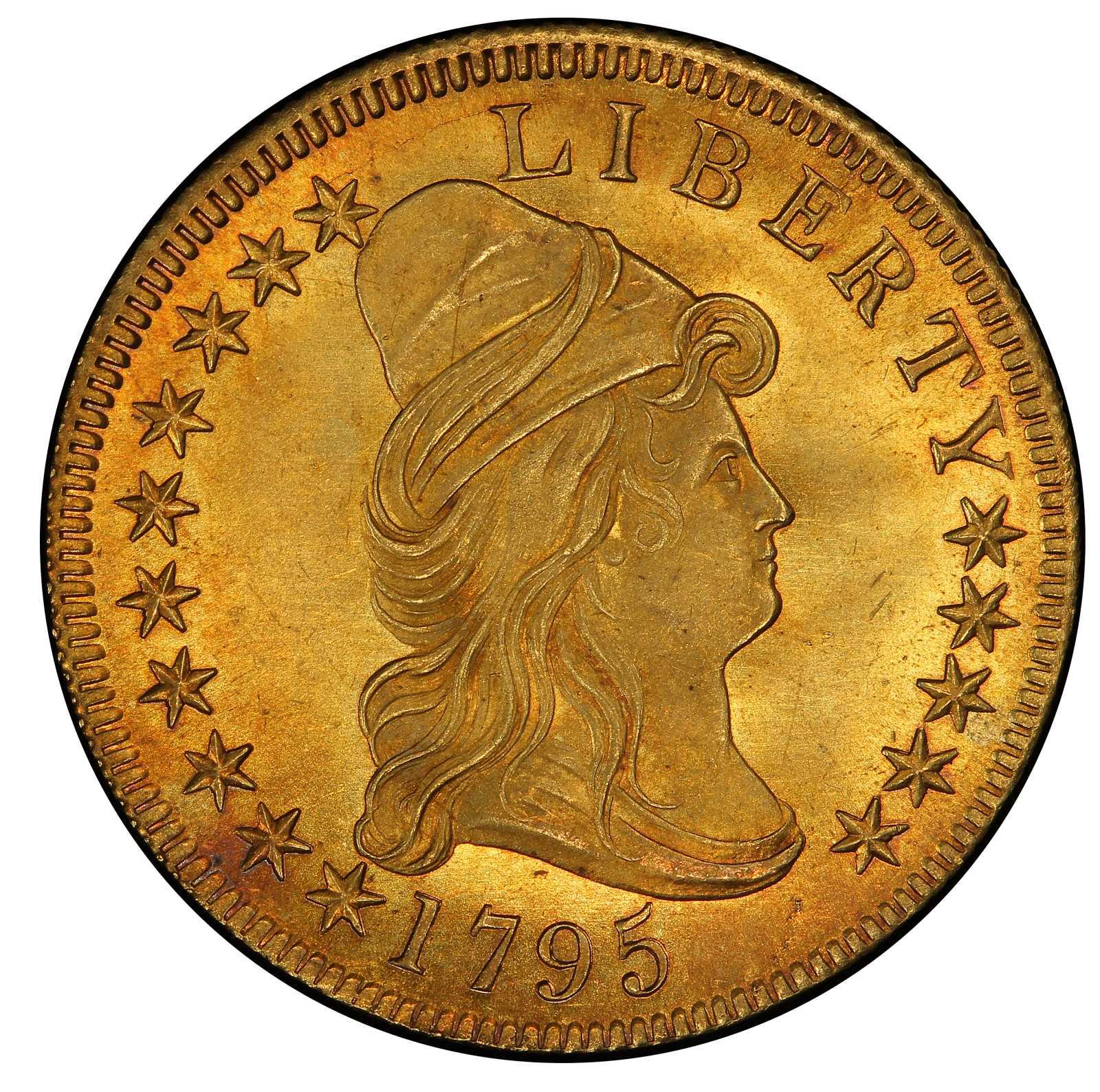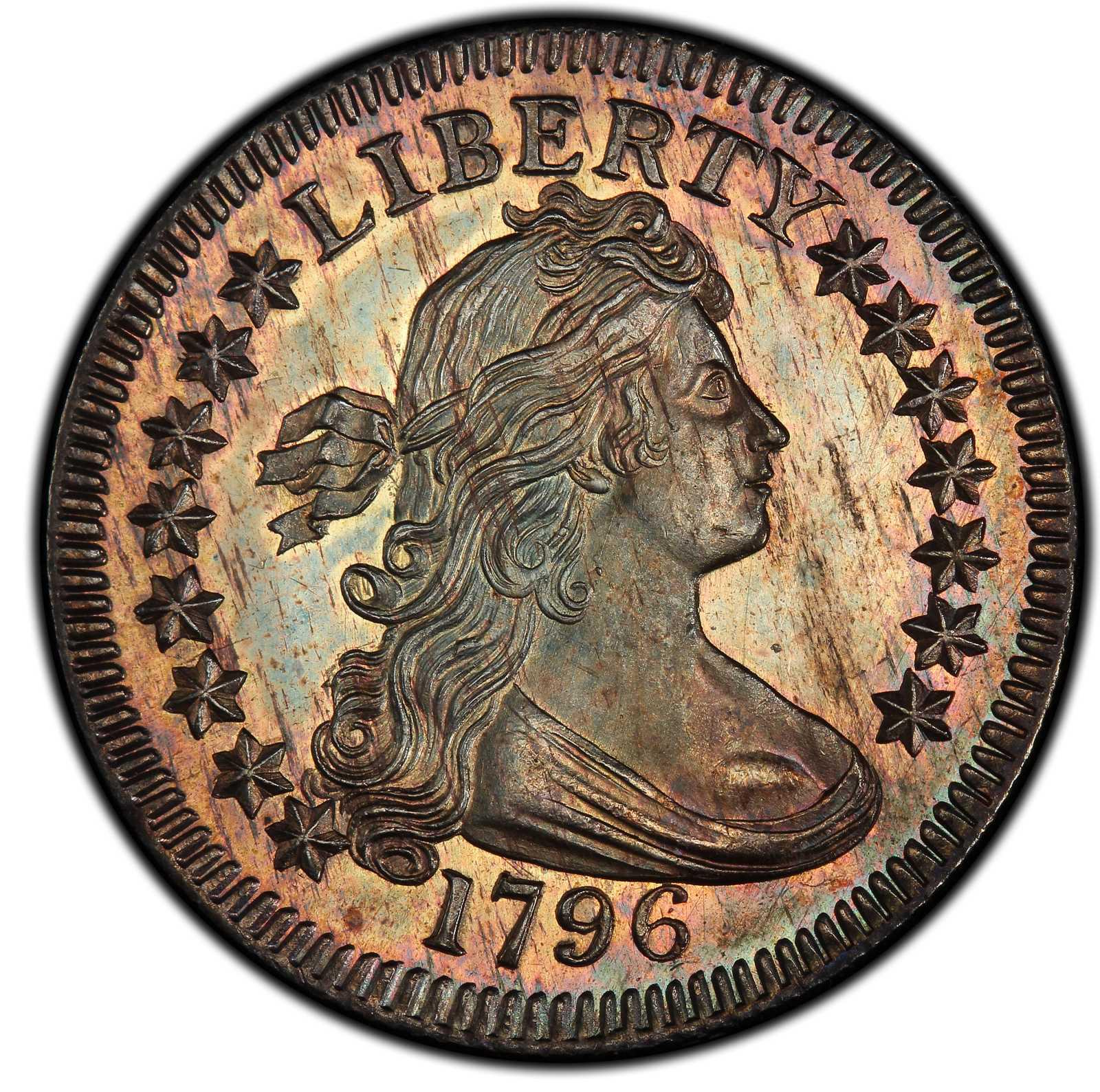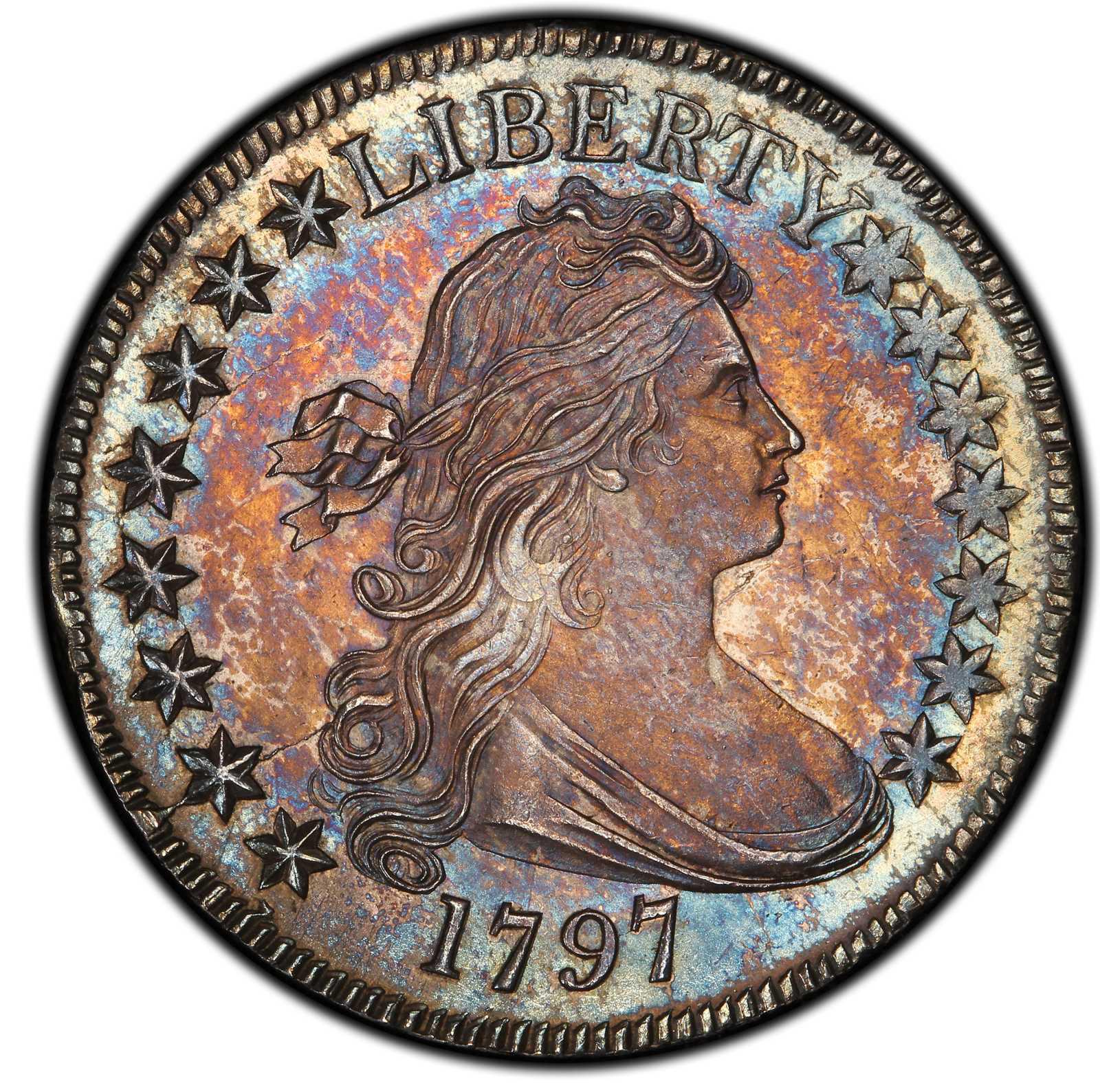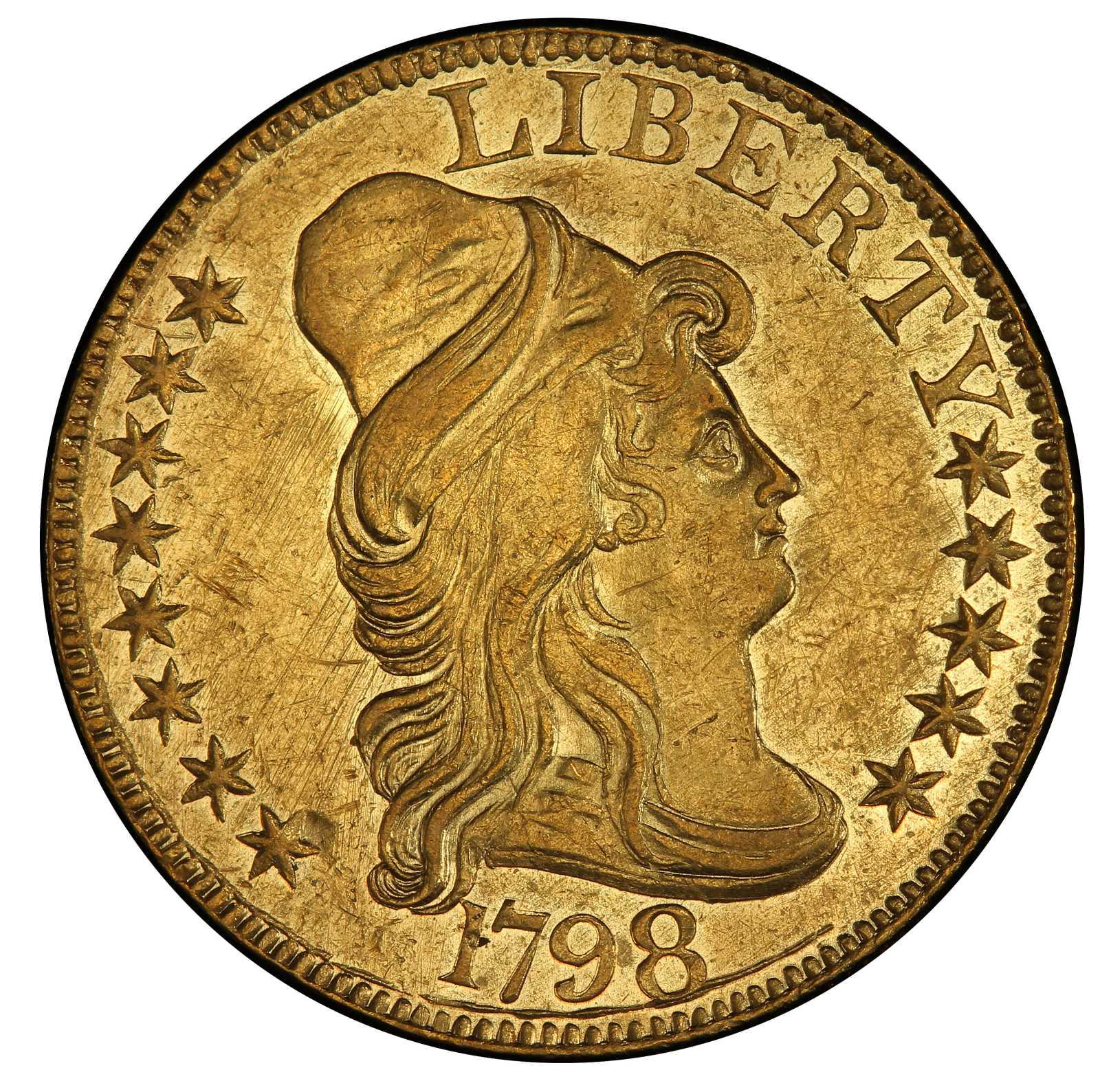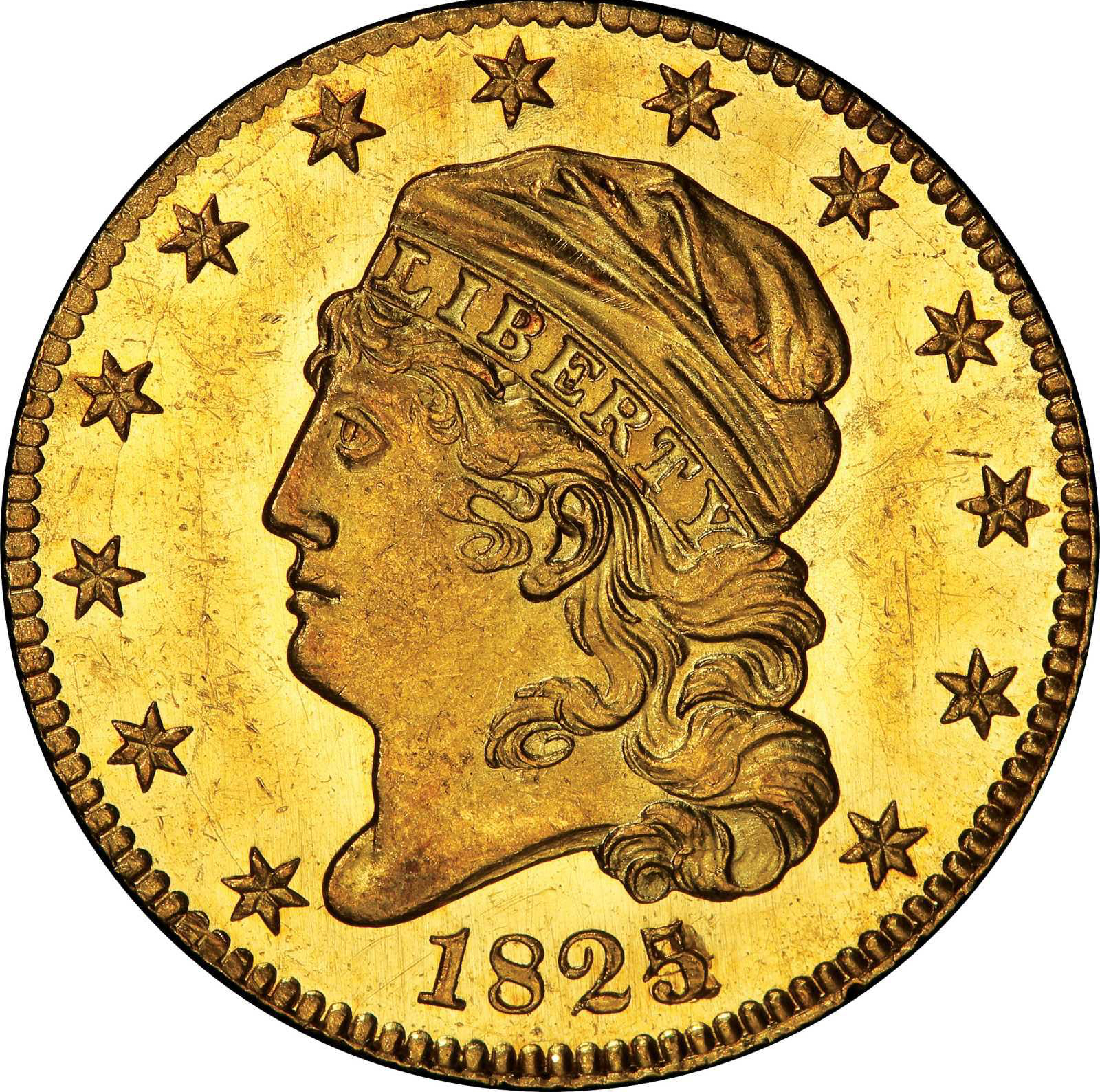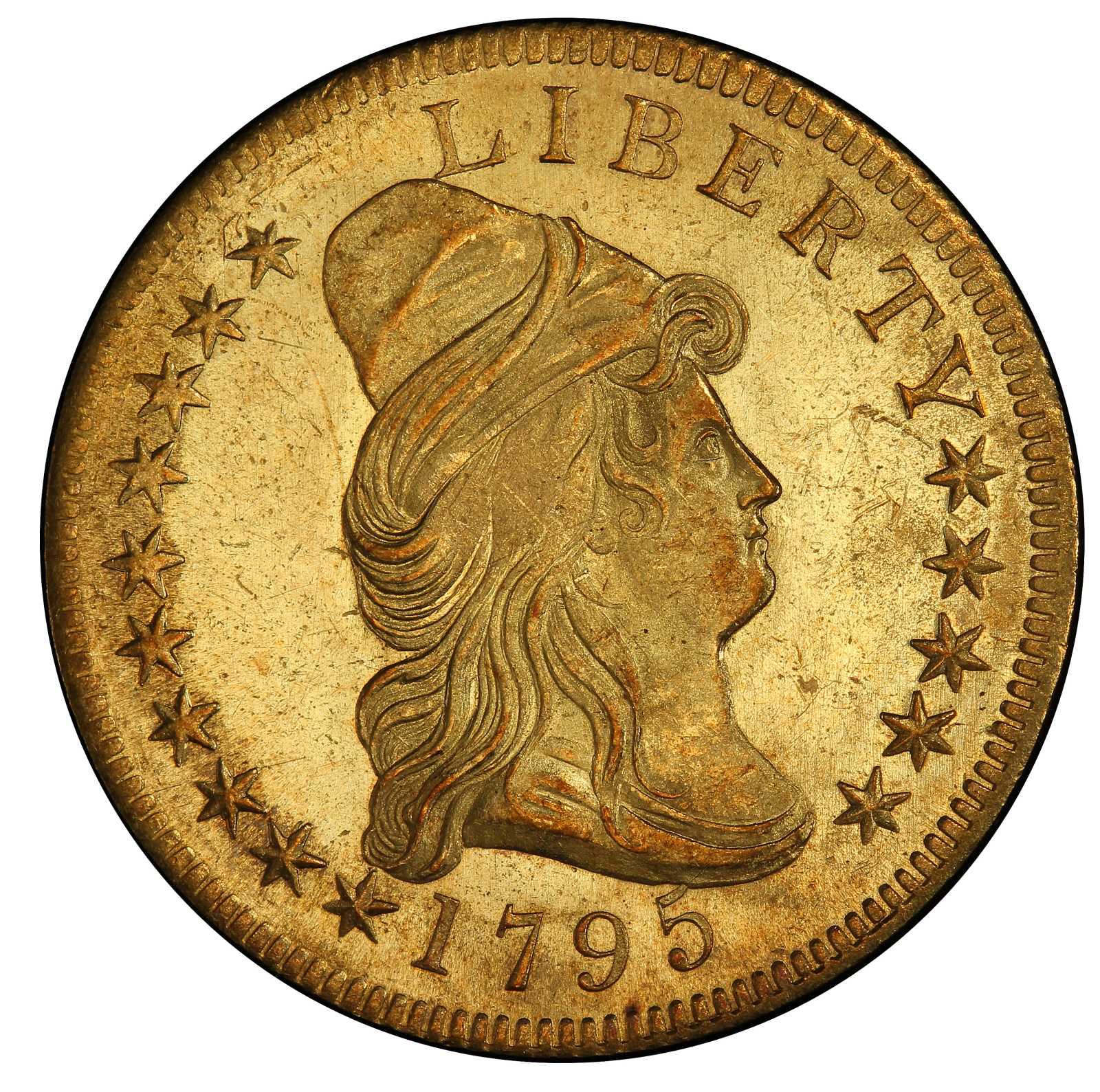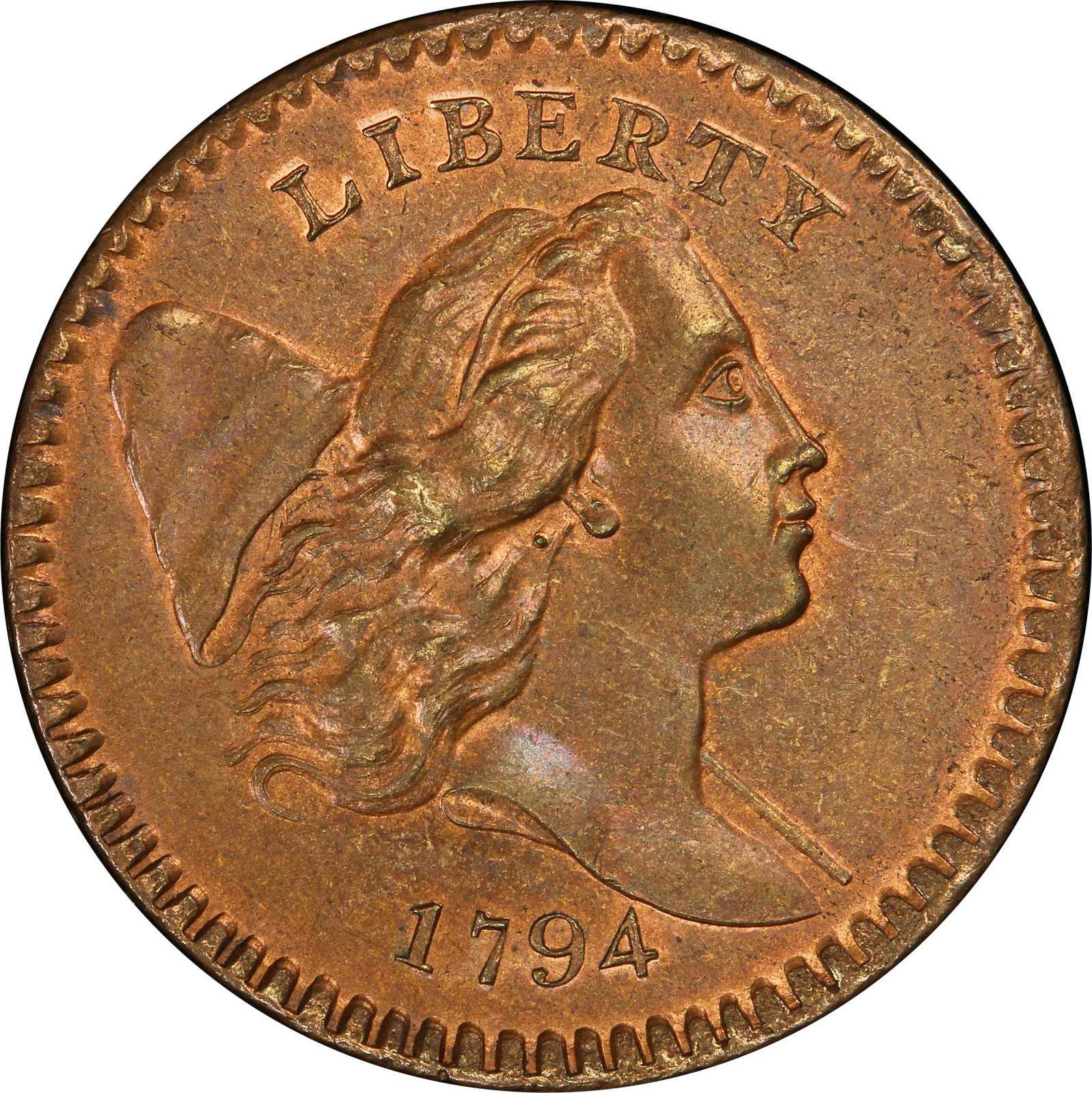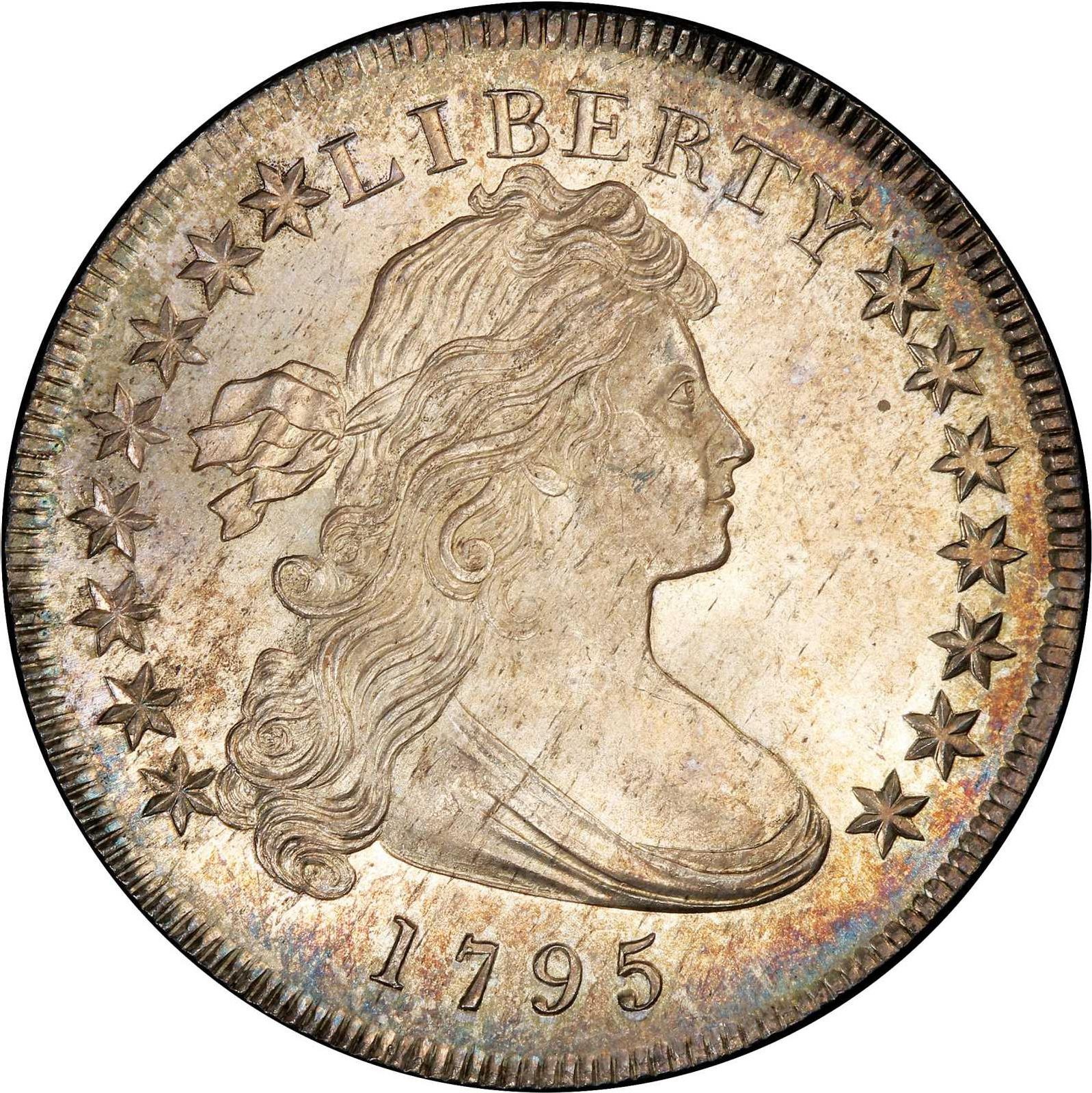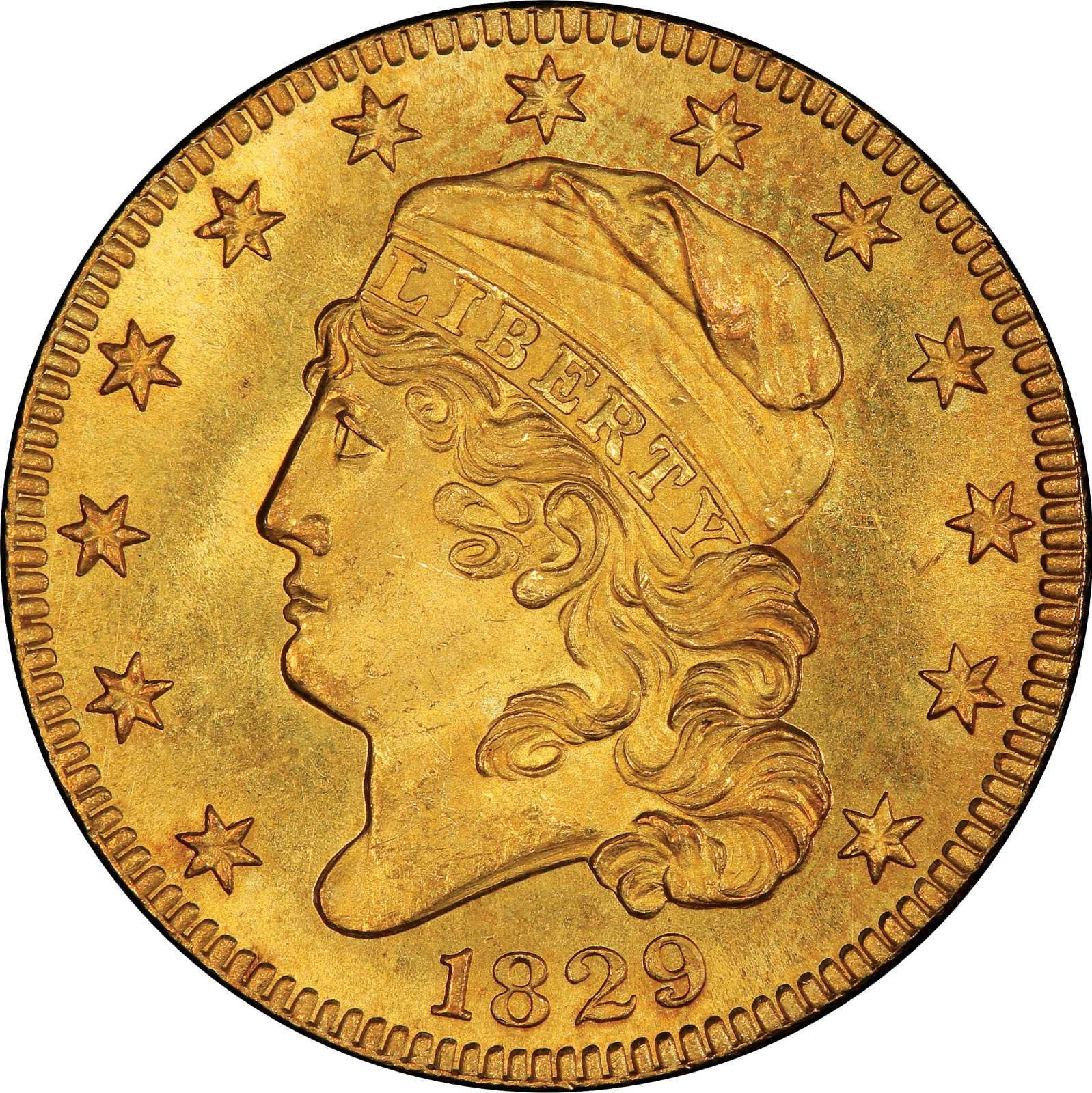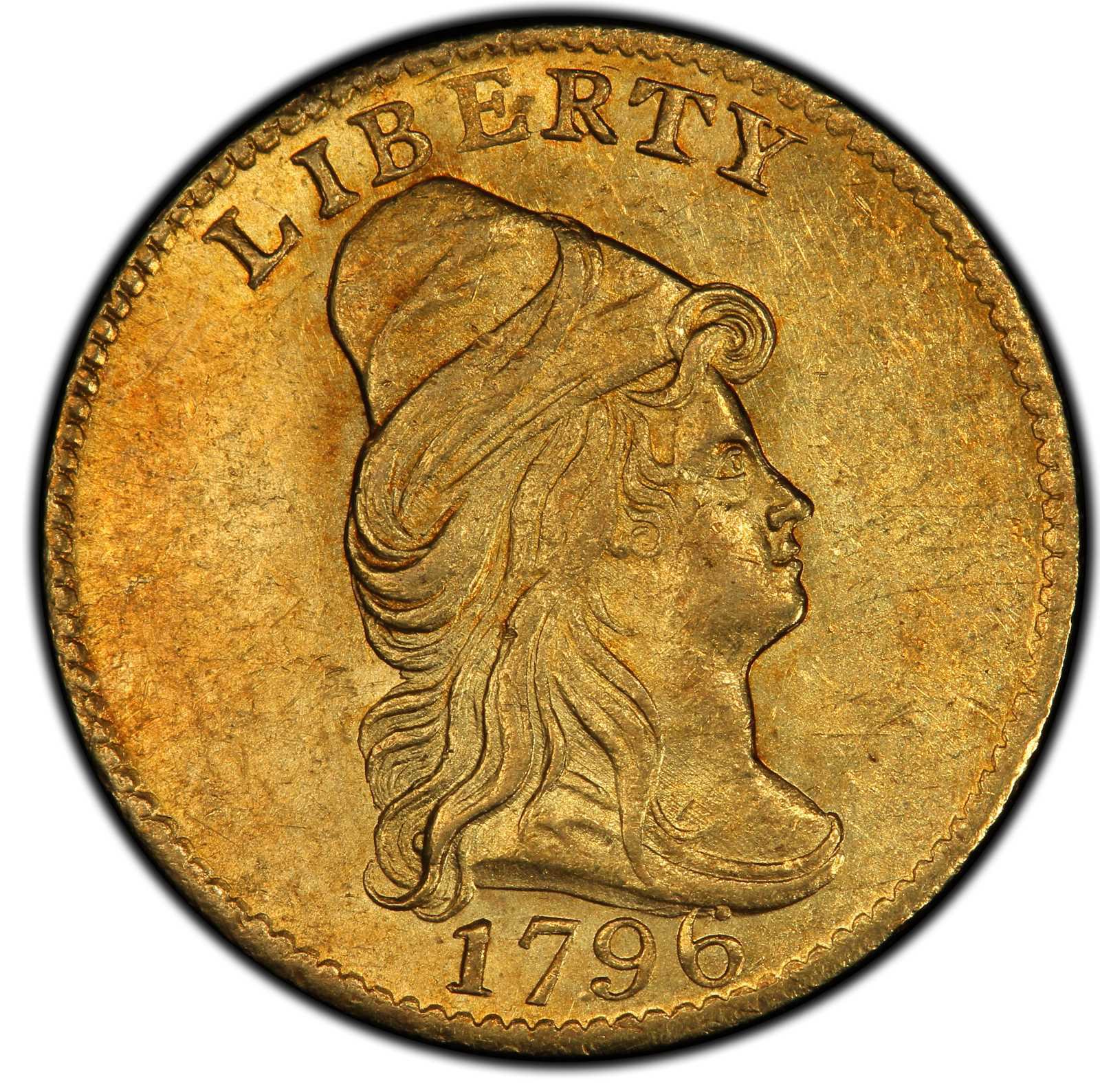America’s oldest coin auction firm, Stacks Bowers, has been handling the sale of the world famous D. Brent Pogue collection. There are still more coins left to be sold, but the collection has already set a record as the most valuable coin collection ever sold. Below are 20 rarest coins that have sold so far.
1. 1794 Flowing Hair Silver Dollar
Sold for $4,250,000.00
PCGS Population: 2; none finer
The 1794 Flowing Hair Silver Dollar was the first silver dollar produced in America. This particular example is well struck throughout, and shows a very nice luster. In addition to the rarity factor, the key selling points on this coin were the impeccable strike, the quality of Liberty’s portrait, and the lack of hairlines and dust on the die. This coin was well preserved in a wood cabinet since its striking, and the past owners were sure to take care of this rarity.
2. 1795 Capped Bust Right Eagle
Sold for $2,200,000.00
PCGS Population: 1, none finer.
This coin is the single finest survivor from the first year of the largest gold coin authorized by the Mint Act of 1792. This superlative example is generally acknowledged as not only the finest gold coin from the famous Garrett Collection, but quite possibly the finest 18th century United States gold coin. The satiny surfaces glow with color, embracing the richest gold with fire-lit hints of deep orange. The coin’s surface shows well and presents very few flaws.
3. 1880 Capped Bust Left Quarter Eagle
Sold for $2,000,000.00
PCGS Population: 1, none finer.
The single finest example of this issue, a breathtaking gem specimen of the rarest U.S. type coin. The overall tone is dark yellow, bright with satiny luster. Both sides show intact cartwheel that is as impressive at arm’s length as it is under a glass. Only the most trivial marks are seen, with no trace of the thorough coat of hairlines many lightly handled high grade early gold coins attract over time. The detail is complete and definitive, and the low relief borders are present more often than not. The eye appeal of this coin is stupefying. It is almost inconceivable that an example like this could exist.
4. 1833 Capped Head Left Half Eagle
Sold for $1,351,250.00
PCGS Population: 1, none finer.
The flaws on this coin were almost entirely created at the moment of striking. All are minor. Shallow circular depressions, likely from a drop of something liquid or nearly that consistency on the die surface at the moment of striking, are seen on the reverse at the base of 5 in the denomination and below U of UNITED. In preparation for Proof strikings from these dies, the reverse was notably lapped, creating reflective spaces near the talon at left and the arrow feathers. The Mint Cabinet coin, still in the National Numismatic Collection at the Smithsonian Institution, is struck from an identical early die state.
5. 1796 Draped Bust Quarter
Sold for $1,300,000.00
PCGS Population: 2, 1 finer
This coin is fully struck everywhere but the eagle’s head, where the nostril and tongue are formed and the eye is nearly intact but the head remains somewhat soft. Every single star center is complete, peaked, and sharp. Each strand of hair, fold of drapery, and denticle are defined. In the wreath, the leaves are veined and the palms are concave. Every berry is round. All these details, intact from the moment the dies loosened their grip on the silver blank, have spent more than two centuries reacting to their environment in the most beautiful way, resulting in sea-green and blue fields, rose and gold peripheries, and hints of luxurious lavender.
6. 1797 Draped Bust Half Dollar
Sold for $1,300,000.00
PCGS Population: 1, none finer.
The finest known 1797 half dollar, the finest example of a Small Eagle half dollar, and perhaps the most valuable half dollar in existence. From arm’s length, this appears to be the most beautiful coin imaginable. At nose’s tip, its value increases, as the full star centers of the left obverse emerge, the individual hairs can be counted, and the anatomical detail of the eagle becomes clear. The rarity of this date is related to the die cracks on both sides, with the obverse heavily cracked through star 2 to center. This die could have broken after this strike; indeed, it is a wonder it could strike this example.
7. 1795 Draped Bust Silver Dollar
Sold for $1,057,500
PCGS Population: 1, none finer.
This coin is as legendary as it is distinctive, exhibiting completely reflective fields on both sides. While other high grade dollars from these dies appear somewhat prooflike, this is the sole coin of this entire design type to have been recognized as a Specimen by PCGS. This issue, and perhaps this very coin, represents the very first appearance of the Draped Bust portrait of Liberty. The Small Eagle reverse design also made its debut here, and no dollar anywhere presents it with more detail or better aesthetics than this coin.
8. 1798 Capped Bust Right Half Eagle
Sold for $1,000,000.00
PCGS Population: 1, none finer.
The 1798 Small Eagle half eagle was the last of its species. It is one of the great rarities in the entire series of American coins, perhaps somewhat overlooked precisely because it is so rare. Just six examples are known, of which only three remain outside of institutions and able to be collected.
9. 1825/4 Capped Head Left Half Eagle
Sold for $940,000.00
PCGS Population: 1, none finer.
A long cherished rarity, this variety was missing from the nearly complete Harry W. Bass, Jr. Collection. The D. Brent Pogue example, earlier one of the most prized half eagles in the Eliasberg Collection, is the finer of just two examples known of this legendary overdate. Unlike the other variety of 1825, this obverse shows an extremely bold 4 beneath the final date digit. While the overdate on the BD-1 variety is in nearly the same position, this overdate was cavalierly punched, with only minimal effort to hide the modification.
10. 1795 Capped Bust Right Eagle
Sold for $900,000.00
PCGS Population: 1, none finer.
Perhaps the most famous rarity among the early eagles, the D. Brent Pogue 1795 9 Leaves eagle is in an unparalleled state of preservation, an appropriate starting point for the finest set of early eagles ever sold at auction. This is the single finest example certified by PCGS, potentially surpassed by only the Harry Bass Core Collection coin on display at the American Numismatic Association Museum. The brightly reflective surfaces show resounding cartwheel luster, bolder and more frosty on the obverse than the reverse, making this coin highly valued.
11. 1829 Capped Head Left Half Eagle
Sold for $881,250.00
PCGS Population: 1, none finer.
The rarest date of this design type, the 1829 is the debut issue of the Small Planchet Capped Head half eagle. The D. Brent Pogue specimen shows superb deep yellow patina that swirls with satiny luster when rolled in hand and glows with reflectivity under direct light. All design elements are bold and well defined, though the curl near Liberty’s ear and her lowest curl near star 13 show some very modest flatness in their highest relief. The eagle is fully feathered and the denticles around both sides are crisp. The eye appeal of this coin is as satisfactory and attractive today as when it left the Mint.
12. 1793 Flowing Hair Cent
Sold for $850,000.00
PCGS Population: 1, none finer.
The finest known example from these dies and a candidate for the finest Chain cent of any variety, the Garrett-Pogue Sheldon-3 has been cherished by collectors since it was discovered in France by Pierre-Édouard LeGras, a famous Parisian numismatist who died in 1881. Since that time, this coin has been in several collections of legendary stature and quality. The surfaces do not show the mottled and blended patina that an RB designation might suggest, but instead display a splendidly mellowed and even tone of light steel, one that yields light blue and golden tones in one light, milk chocolate brown in another. Mint color is likewise preserved near the obverse rim, and capturing it in the right light will reveal an aurora of pastel tones.
13. 1832 Capped Head Left Half Eagle
Sold for $822,500.00
PCGS Population: 1, none finer.
The finest known example of this famous rarity, the D. Brent Pogue 1832 12 Stars half eagle has sold at auction just once in the last 125 years. Its attractive yellow gold surfaces are graced with satiny luster, and their toning deepens to orange on approach to the beaded borders. The striking characteristics are quite different from other varieties of this design type, with a sharp central obverse, mostly flat stars, and soft detail through STATES OF AMERICA.
14. 1835 Classic Head Half Eagle
Sold for $822,500.00
PCGS Population: 1, none finer.
Struck with exacting attention, preserved with endless care, this coin glows with the reflectivity it gained at the moment of striking and the fine color it has earned over its lifespan of nearly two centuries. Gleaming deep golden surfaces alight with red and orange toning, subtle over the fields but richer at the peripheries, while pastel violet and blue form a halo around the eagle on the reverse. The deep mirrors of the fields are bright from every perspective, contrasting sharply with the beautifully struck and heavily frosted devices.
15. 1794 Liberty Cap Half Cent
Sold for $800,000.00
PCGS Population: 1, none finer.
This legendary coin is widely acclaimed as the single finest half cent of its era. No other Liberty Cap half cent of any date, not even the much more common 1795 and 1797 issues, has survived looking as much like it did at the moment it was struck. This is unquestionably the ultimate specimen of this type, in terms of both the proportion of original color it retains and its certified grade. The appeal of this coin cannot be adequately captured by a number though, not even a lofty one. It likewise cannot be captured fully with even the best photography, but is best appreciated three-dimensionally and up close.
16. 1795 Draped Bust Silver Dollar
Sold for $763,750.00
PCGS Population: 1, none finer.
Boldly struck, showing remarkable cartwheel luster and profound reflective texture, this dollar displays the quality and stature of a top-shelf gem. The obverse is frosty, dusted with attractive faint gold toning across its surfaces, light enough to let the original silvery surface shine forth but rich enough to present a look of untrammeled originality. The toning deepens near the peripheries, retaining violet-rose, warm coppery orange, and traces of bright blue; the azure highlights are most abundant on either side of the date.
17. 1829 Capped Head Left Half Eagle
Sold for $763,750.00
PCGS Population: 1, none finer.
There can be no greater exclamation point placed on the end of a collection of circulation strike Capped Head, Large Diameter half eagles than this unsurpassable example. It is the single finest specimen of this issue that survives and also tied for the finest graded by PCGS of the design type. Teichman has enumerated just 7 known examples, 3 of which are in institutional collections: the Byron Reed Collection, the National Numismatic Collection, and the Harry Bass Foundation Collection.
18. 1796 Capped Bust Right Quart. Eagle
Sold for $700,000.00
PCGS Population: 2, 2 finer
There are few classic rarities struck at the Philadelphia Mint in the 18th century that can offer this coin’s combination of a long provenance with such extraordinary preservation. The distinctive design, much desired as a cornerstone in any type collection of United States coins, is ideally illustrated here, unworn and beautifully realized. The strike is firm, with the usual softness in the denticles limited to just a short arc in the upper right.
19. 1815 Capped Bust Left Half Eagle
Sold for $700,000.00
PCGS Population: 1, none finer.
An American numismatic treasure, this gem 1815 half eagle would be the single star of the D. Brent Pogue Collection were it not for the presence of the only collectible 1822 half eagle. The 1815 was long the more famous rarity within the half eagle denomination, and today it is still revered by generalists and gold coin specialists alike. This is the single finest known example, endowed with extraordinary visual appeal and a provenance that includes some of the most legendary names in numismatic history.
20. 1795 Flowing Hair Silver Dollar
Sold for $700,000.00
PCGS Population: 1, none finer.
This is perhaps the most legendary and most discussed 1795 Flowing Hair dollar extant, a coin that received celebratory commentary from numismatic insiders and realized a million-dollar price at a small Philadelphia auction. Considered a special or specimen strike by many cognoscenti, this dollar has been considered something of a companion coin to the Garrett-Pogue 1795 Draped Bust dollar, graded Specimen-66 by PCGS, the only 1795 dollar of any type to be certified as a Specimen by PCGS.




